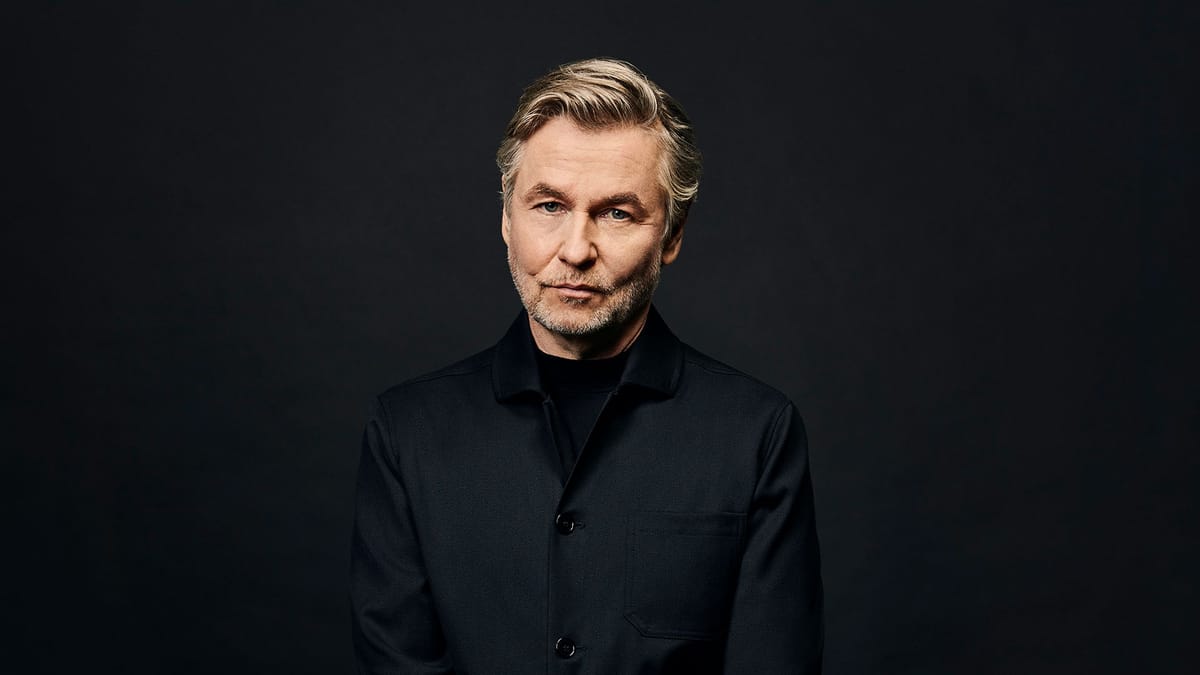In This Program
The Concert
Friday, October 18, 2024, at 7:30pm
Saturday, October 19, 2024, at 7:30pm
Sunday, October 20, 2024, at 2:00pm
Photography Exhibit with First Exposures: Nature in Art, Art in Nature. On display in the First Tier Lobby.
Esa-Pekka Salonen conducting
Ludwig van Beethoven
Symphony No. 6 in F major, Opus 68, Pastoral (1808)
Awakening of joyful sentiments upon arriving in the country (Allegro ma non troppo)
Scene by the brook (Andante molto mosso)
Merry gathering of the country folk (Allegro)
Thunderstorm (Allegro)
Shepherd’s Song: Happy and grateful feelings after the storm (Allegretto)
Intermission
Esa-Pekka Salonen
Cello Concerto (2016)
I.
II.
III.
First San Francisco Symphony Performances
Rainer Eudeikis cello
Ella Wahlström sound designer
Claude Debussy
La Mer (1905)
De l’Aube à midi sur la mer (From Dawn Till Noon on the Sea)
Jeux de vagues (Play of the Waves)
Dialogue du vent et de la mer (Dialogue of the Wind and the Sea)
Program Notes
At a Glance
Symphony No. 6 in F major, Opus 68, Pastoral
Ludwig van Beethoven
Baptized: December 17, 1770, in Bonn
Died: March 26, 1827, in Vienna
Work Composed: 1808
SF Symphony Performances: First—March 1918. Alfred Hertz conducted. Most recent—January 2019. Herbert Blomstedt conducted.
Instrumentation: 2 flutes, piccolo, 2 oboes, 2 clarinets, 2 bassoons, 2 horns, 2 trumpets, 2 trombones, timpani, and strings
Duration: About 40 minutes
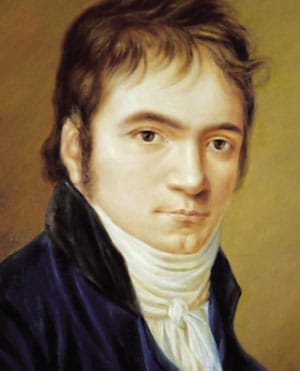
As the piece begins, we are little more than eavesdroppers. The music of Beethoven’s Sixth Symphony seems already to be in progress; we have simply stumbled within earshot. What we hear, as if from a distance, is an insouciant tune—hardly even a tune, more a fragment of a tune—hummed casually by the violins ever so quietly over a scarcely exhaled drone in the violas, cellos, and basses. After only four measures the music pauses for a breath, but already (we will understand in retrospect) we have encountered the notes and rhythms that will fuel nearly the entire first movement of the Pastoral Symphony.
Like many modern urbanites, Beethoven drew important sustenance from the variety and density of the city but complained incessantly about its inconveniences. In fact, he did escape to the suburban parks and countryside when he was able, and spent his summers mostly in the rural areas surrounding Vienna. On a few occasions he went farther afield, dropping in at the country residences of well-to-do friends in Hungary or visiting spas in Bohemia. “How delighted I shall be to ramble for a while through bushes, woods, under trees, through grass, and around rocks,” he wrote in 1810 to Therese Malfatti (a future object of his affections), looking forward “with childish excitement” to a getaway a year after the Sixth Symphony was published. “No one can love the country as much as I do. For surely woods, trees, and rocks produce the echo which man desires to hear.”
Beethoven was not one to speak more than necessary of his compositional methods and intentions, and he voiced the opinion that listeners were generally restricted in their experience of a work if they expected in advance to hear some image depicted. At the head of a violin part used in the first performance we read the words “Pastoral Symphony or / Recollection of Country Life / More an Expression of Feeling than Painting.” Each of the symphony’s five movements also carries an individual motto.
The Music
Beethoven’s Sixth evolves as an exploration of an unemphatic harmonic progression that embodies a feeling of calm. The first movement prefigures the aura of calm by drawing out harmonies over uncharacteristically long spans, spacious expanses of serene relaxation in which the ear is busied only by the surface details of fragmented melodies. So when the first movement returns to action after its opening phrase, it quickly stumbles into a sort of stuttering repetition. The same melodic fragment is repeated verbatim through 10 measures, changed only by a swelling and then a diminishing of volume, with the bassoons reinforcing the texture at the loudest point. Similar repetitions appear elsewhere in the movement. The harmony can prove just as static as the melody. In fact, the first movement is practically devoid of dissonance—the spice of harmony—and even minor chords are nearly banished. The proceedings do not grow bland, however, thanks in part to the composer’s ingenious use of rhythmic dissonance, with conflicting groups of two and three notes overlapping in the same spaces of time.
The bucolic spirit of the opening movement continues in the second, the “Scene by the brook,” and the sense of calm grows ever more still. Beethoven’s walking tempo, but with much motion, proves perfect for depicting the gurgling monotony of the brook, which the composer generally assigns to the second violins, violas, and cellos. The melodies that arch above are exquisite, and Beethoven again subjects them to fragmentation and repetition, just as he had his themes in the first movement. The orchestration is delicate and magical throughout. The manuscript page still exists in which Beethoven inscribed a note to his copyist, near the end of the slow movement: “NB: write the word Nightingale, Quail, Cuckoo, in the first flute, in the first oboe, in the first and second clarinets, exactly as here in the score.” Later he remarked to Anton Schindler, his pupil and sometime amanuensis, that the bird allusions were “merely a joke.” Joke or not, there they stand, perfectly integrated into the texture.
The Pastoral is also unique among Beethoven’s symphonies in that it is the only one of the nine that does not adhere to the standard four-movement format. Instead, Beethoven casts it in five movements, with the last three fused into a more unified, tripartite span. The “Merry gathering” is full of peasant humor, but it’s purveyed with immense sophistication, in triple meter. Anton Schindler was not always a reliable source, but his reminiscence about the nature of this third movement does sound plausible. “Beethoven,” he wrote, “asked me if I had noticed how village musicians often played in their sleep, occasionally letting their instruments fall and keeping quite still, then waking up with a start, getting in a few vigorous blows or strokes at a venture, although usually in the right key, and then dropping to sleep again. Apparently he had tried to portray these poor people in his Pastoral Symphony.”
Cellos and basses suddenly shudder, pianissimo, and violins let loose scales in tiny staccato droplets. We have entered a new Allegro movement, and within a page the “Thunderstorm” breaks out in fortissimo fury, replete with the sounds of piccolo (good for depicting lightning), trombones, and timpani.
The storm soon passes, with yodeling music serving as a link to the concluding Allegretto. (Gratias agimus tibi—“We give thee thanks”—the composer wrote over a sketch for this movement.) The principal theme, a folk-like tune, pervades practically the whole movement. A secondary motif sounds reminiscent of the stuttering figure from the beginning of the symphony, adding a sense of symmetry to Beethoven’s peaceable landscape.
—James M. Keller
Cello Concerto
Esa-Pekka Salonen
Born: June 30, 1958, in Helsinki
Work Composed: 2015–16
First SF Symphony Performances
Instrumentation: solo cello, 2 flutes (2nd doubling alto flute), piccolo, 2 oboes, English horn, 2 clarinets (2nd doubling E-flat clarinet), bass clarinet (doubling contrabass clarinet), 2 bassoons, contrabassoon, 4 horns, 2 trumpets, 2 trombones, timpani, percussion (bongo drums, conga drums, claves, maracas, cabasa, flexatone, crotales, tuned gongs, marimba, glockenspiel, and vibraphone), harp, piano (doubling celesta), live electronics (7-channel surround sound and looping system), and strings
Duration: About 30 minutes
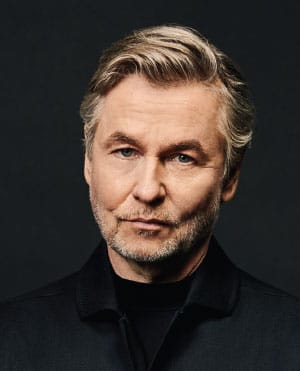
Esa-Pekka Salonen’s Cello Concerto was commissioned by the Chicago Symphony, New York Philharmonic, the Barbican, and Elbphilharmonie, and was premiered by Yo-Yo Ma and the Chicago Symphony in March 2017, with Salonen conducting.
From the Composer
Some of the ideas for my Cello Concerto can be traced back by at least three decades, but the actual material for the piece was mostly developed in the summer of 2015 when I decided to spend a few months researching for new kinds of textures without a concrete plan how to use them. I decided to use some phrases from my 2010 solo cello work ...knock, breathe, shine… in the second and third movements as I always felt that the music of the solo piece was almost orchestral in its scope and character, and would function well within an orchestral environment.
I have never—not even during the quite dogmatic and rigid modernist days of my youth—felt that the very idea of writing a solo concerto would in itself be burdened with some kind of dusty bourgeois tradition. A concerto is simply an orchestral work where one or several instruments have a more prominent role than the others. A concerto does not suggest a formal design the same way a symphony does. I also happen to like the concept of a virtuoso operating at the very limits of what is physically (and sometimes mentally) possible. In Nietzsche’s words: “You have made danger your vocation; there is nothing contemptible in that.”
I have learnt, however, that virtuosity doesn’t limit itself to the mechanics of playing an instrument. A true virtuoso can also capture the beauty and expression in the quietest moments, to fill near-stasis with life through a musician’s imagination and ability to communicate. In my other life as a performer, I witness that almost every day: how musicians can create meaning from a single note. The composer-me is humbled by it, but also deeply grateful. After all, all those symbols on paper mean nothing until somebody gives them life.
It was a very great pleasure and honor to write a concerto for one of the most unique life-givers and communicators of our time, Yo-Yo Ma. And for these performances, I am very pleased to hear the concerto in the hands of the SF Symphony’s own Principal Cello, Rainer Eudeikis, in his solo debut with the Orchestra.
The first movement opens with what in my sketchbook had the title “Chaos to line.” Chaos here must be understood metaphorically, as a stylized version of the idea. I like the concept of a simple thought emerging out of a complex landscape. Almost like consciousness developing from clouds of dust.
This leads to the second semi-cosmological metaphor: a comet. I imagined the solo cello line as a trajectory of a moving object in space being followed and emulated by other lines/instruments/moving objects. A bit like a comet’s tail. In musical terms it could be described as a canon but not quite as the imitation is not always literal or precise. The gestus remains however almost identical every time. Sometimes the imitating cloud flies above the cello, sometimes in the very same register. It thins out to two lines and finally to one.
There are faster, more playful episodes alternating with the cloud, and finally the movement gains enough speed for the balance to tilt towards fast music. At the end a variation of the cloud returns.
The second movement is very simple in form, more complex in texture. It starts with a wedge-formed cloud [>] and ends with another [<], if one can imagine such a thing. The slow cello arches are looped to create harmony from single lines. Sometimes the loops are dispersed in space. The middle section is a playful duet between the solo cello and the alto flute.
The third movement starts with a slow, brooding cello solo under the residue of the second wedge-cloud. The expression quickly becomes more extroverted through a series of accelerandi. A rhythmic mantra starts to develop in the congas and bongos. It will appear often later in the course of the movement, mostly in the timpani. This music is often dance-like; sometimes gesticulating wildly, perhaps from the sheer joy of no longer having nothing to do with clouds and processes.
An acrobatic solo episode leads to a fast tutti section where I imagined the orchestra as some kind of gigantic lung, expanding and contracting first slowly, but accelerating to a point of mild hyperventilation which leads back to the dance-like material. Quixotic solo cello episodes lead to a joyful coda based on the “lung” music, but now with a solo cello line. Finally the kinetic energy burns itself out gently, the rapid movement slows down and the cello line climbs slowly up to a stratospherically high B-flat, two centimeters to the left from the highest note of the piano.
—Esa-Pekka Salonen
La Mer
Claude Debussy
Born: August 22, 1862, in Saint-Germain-en-Laye, France
Died: March 25, 1918, in Paris
Work Composed: 1903–05
SF Symphony Performances: First—January 1914. Henry Hadley conducted. Most recent—May 2024. Ryan Bancroft conducted.
Instrumentation: 2 flutes, piccolo, 2 oboes, English horn, 2 clarinets, 3 bassoons, contrabassoon, 4 horns, 3 trumpets, 2 cornets, 3 trombones, tuba, timpani, percussion (bass drum, cymbals, glockenspiel, tam-tam, and triangle), harp, and strings
Duration: About 23 minutes
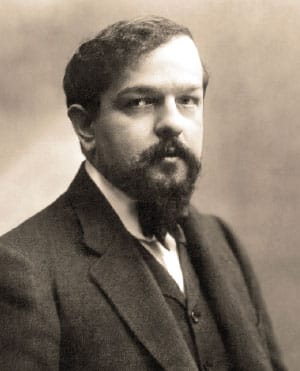
On the basis of the Claude Debussy they already knew, Parisian critics in 1905 seemed to have a clear sense that this new score was somehow different. Some who had been among the composer’s most dedicated allies were now among the most disappointed of observers, specifically because La Mer moved so decisively away from the mistwashed, unmuscular delicacy that had been so valued. Giacomo Puccini, always a sensitive and sympathetic listener to music more radical than his own, spoke of “Debussy’s revolt against Debussyisme.”
Debussy all his life maintained a nearly total silence about his childhood. He did, however, make occasional and affectionate references to summer weeks spent at the beaches of Cannes. He learned then to love the sea, and no one who knows Debussy’s music need be told that what he loved particularly was its unpredictability, its everchanging nature. His parents at some point conceived the notion that he ought to be a sailor, but his vocation was determined when a Mme. Mauté de Fleurville, a lady with fascinating connections (she had been a pupil of Frédéric Chopin and was the mother-in-law of Paul Verlaine), discovered his musical gift.
Thirty years elapsed between those inspiring lessons and the first sketches for La Mer—years spent at the Paris Conservatory; as household pianist to Tchaikovsky’s patroness, Mme. Nadezhda von Meck; as an eager student of the music of Wagner and pilgrim to Bayreuth; as a friend of contemporary poets and painters; as the composer of a growing catalogue of works that attracted an attention not only widespread but, given their originality, remarkably respectful. It is, however, always a surprise to recall that La Mer was only the composer’s seventh major orchestral score, so brilliantly assured is it, so possessive in ways that sometimes make it seem that Debussy invented the modern orchestra.
The Music
As we gradually learn to discern objects in near darkness, so we learn to hear motion in the stillness of Debussy’s dawn. Thematic fragments detach themselves from the surrounding texture until at last a clear sense of motion, of rhythmic pattern, is established. Debussy is most evocative in the wonderful theme for cellos, its pattern of swell and retreat echoed subtly in the timpani and horns. It even looks like a wave on the page—so much, in fact, like the wave in the painting by Japanese artist Katsushika Hokusai (1760–1849) that Debussy asked his publisher to put a detail from that painting on the cover of his score.
The sketch of the Play of the Waves is scherzo and intermezzo in this not-quite-symphony, an interlude of lighter weight and less dense musical facture between the passions and storms, the awesome concentration of the first and third movements. The dialogue in the finale is often tempestuous. Exhibiting that new preoccupation with firm and perceptible formal design, Debussy ties the triumphant peroration to the last bars of the opening movement, the journey from dawn to noon.
—Michael Steinberg
“The popularity of the Pastoral Symphony rests upon the common and mutual misunderstanding that exists between man and nature . . . All such imitations are in the end useless—purely arbitrary interpretations. But certain of the old master’s pages do contain expression more profound than the beauty of a landscape. Why? Simply because there is no attempt at direct imitation, but rather at capturing the invisible sentiments of nature . . . the limitless depths of the forest give free rein to the imagination.” —Claude Debussy, February 1903
About the Artists
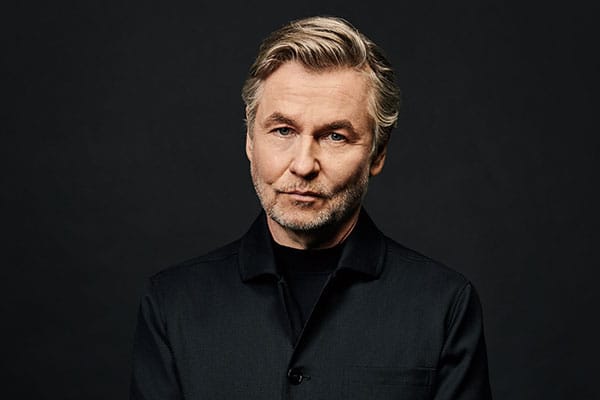
Esa-Pekka Salonen
Music Director
Known as both a composer and conductor, Esa-Pekka Salonen is the Music Director of the San Francisco Symphony. He is the Conductor Laureate of the Los Angeles Philharmonic, where he was Music Director from 1992 until 2009, the Philharmonia Orchestra, where he was Principal Conductor & Artistic Advisor from 2008 until 2021, and the Swedish Radio Symphony Orchestra. As a member of the faculty of Los Angeles’s Colburn School, he directs the preprofessional Negaunee Conducting Program. Salonen cofounded, and until 2018 served as the Artistic Director of, the annual Baltic Sea Festival, which invites celebrated artists to promote unity and ecological awareness among the countries around the Baltic Sea.
Salonen has an extensive and varied recording career. Releases with the San Francisco Symphony include recordings of Kaija Saariaho’s opera Adriana Mater, Bartók’s piano concertos, as well as spatial audio recordings of several Ligeti compositions. Other recent recordings include Strauss’s Four Last Songs, Bartók’s The Miraculous Mandarin and Dance Suite, and a 2018 box set of Mr. Salonen’s complete Sony recordings. His compositions appear on releases from Sony, Deutsche Grammophon, and Decca; his Piano Concerto, Violin Concerto, and Cello Concerto all appear on recordings he conducted himself.
Esa-Pekka Salonen is the recipient of many major awards. Most recently, he was awarded the 2024 Polar Music Prize. In 2020, he was appointed an honorary Knight Commander of the Order of the British Empire (KBE) by the Queen of England.
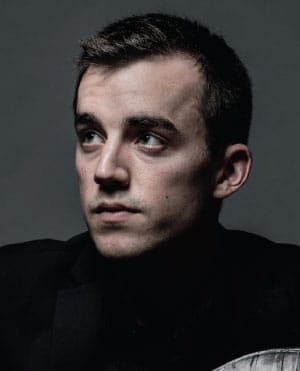
Rainer Eudeikis
Rainer Eudeikis joined the San Francisco Symphony as Principal Cello in 2022 and holds the Philip S. Boone Chair. He was previously principal cello of the Atlanta Symphony and Utah Symphony, as well as for the Mainly Mozart Festival and Cabrillo Festival of Contemporary Music.
Recent performances include Shostakovich and Haydn concertos with the Atlanta Symphony, Schumann’s Cello Concerto and Strauss’s Don Quixote with the Utah Symphony, and numerous solo, recital, and chamber music performances across the United States and abroad. He makes his San Francisco Symphony concerto debut with this program.
Born in Texas, Eudeikis began cello studies at the age of six. Following studies in Colorado with Jurgen de Lemos, he attended the University of Michigan as a student of Richard Aaron, completing his bachelor of music in three years with highest honors. He received his master of music from Indiana University, where he studied with Eric Kim, and subsequently completed his artist diploma at the Curtis Institute of Music, studying with Carter Brey and Peter Wiley. He has been invited to serve as artist-faculty at the Aspen Music Festival and Brevard Music Center, and is a dedicated teacher and coach.
For more, read our Meet the Musicians interview with Rainier Eudekis.

